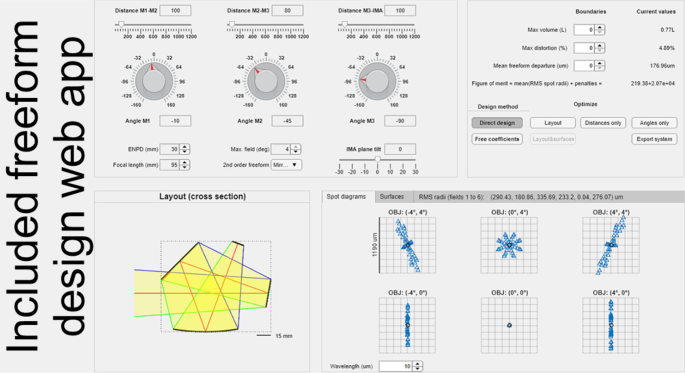Researchers have developed a new approach to designing freeform optical systems, focusing on understanding and correcting aberrations, which are imperfections that distort images. The study categorizes optical systems based on their symmetry, primarily concentrating on systems with one plane of symmetry, as they are most common.
The research team utilizes a detailed mathematical method to describe and analyze aberrations in these systems. They employ a series of equations to represent the deviations of light rays from their ideal paths, breaking down these deviations into different orders of aberrations, similar to how standard lens aberrations are understood. This approach allows for the description of aberrations in systems lacking rotational symmetry, unlike traditional methods.
The scientists consider optical systems as a sequence of reflective or refractive surfaces. They model each surface mathematically using power series, acknowledging that in systems with one plane of symmetry, certain terms in these series disappear. To track how light rays interact with each surface, they introduce “ray mapping functions,” which are also expressed as power series. These functions describe where a ray, defined by its starting point and direction, intersects each optical surface.
The core of the method relies on Fermat’s principle, which states that light rays travel along paths that minimize the optical path length. Applying this principle leads to a set of differential equations that govern the behavior of light within the optical system. The researchers use a power series method to solve these equations, allowing them to determine the coefficients in their mathematical descriptions of surfaces, ray mappings, and aberrations.
The design process is broken down into steps. First, the basic layout of the optical system is defined, including the number and type of optical components. Then, the differential equations are formulated and solved in stages. Initially, a non-linear system of equations is solved to define the basic optical properties. Subsequently, linear systems of equations are solved order by order to refine the system design by minimizing or eliminating specific aberrations. Weighting factors based on system specifications like entrance pupil diameter and field of view are incorporated to ensure practical performance.
This deterministic design method aims to provide a “first time right” solution for freeform optical systems. It provides a starting point that accurately describes the optical system and its performance, which can then be further refined using conventional optical design software optimization techniques. The method also includes an analytical ray-tracing evaluation, allowing designers to interpret the system’s behavior and explore design alternatives. The researchers emphasize that this approach offers a direct and efficient way to design complex freeform optical systems and evaluate their imaging quality.

Leave a Reply